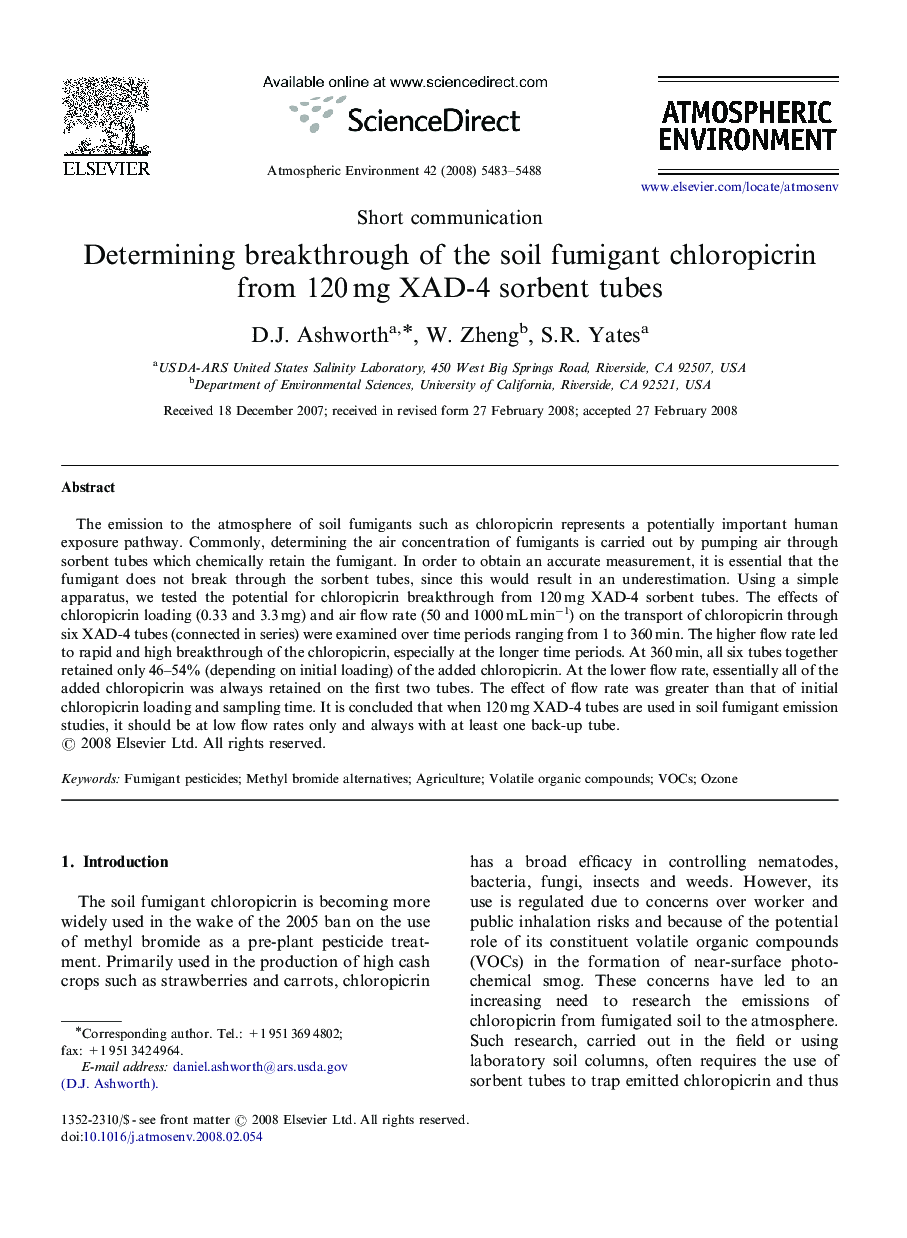| Article ID | Journal | Published Year | Pages | File Type |
|---|---|---|---|---|
| 4442748 | Atmospheric Environment | 2008 | 6 Pages |
The emission to the atmosphere of soil fumigants such as chloropicrin represents a potentially important human exposure pathway. Commonly, determining the air concentration of fumigants is carried out by pumping air through sorbent tubes which chemically retain the fumigant. In order to obtain an accurate measurement, it is essential that the fumigant does not break through the sorbent tubes, since this would result in an underestimation. Using a simple apparatus, we tested the potential for chloropicrin breakthrough from 120 mg XAD-4 sorbent tubes. The effects of chloropicrin loading (0.33 and 3.3 mg) and air flow rate (50 and 1000 mL min−1) on the transport of chloropicrin through six XAD-4 tubes (connected in series) were examined over time periods ranging from 1 to 360 min. The higher flow rate led to rapid and high breakthrough of the chloropicrin, especially at the longer time periods. At 360 min, all six tubes together retained only 46–54% (depending on initial loading) of the added chloropicrin. At the lower flow rate, essentially all of the added chloropicrin was always retained on the first two tubes. The effect of flow rate was greater than that of initial chloropicrin loading and sampling time. It is concluded that when 120 mg XAD-4 tubes are used in soil fumigant emission studies, it should be at low flow rates only and always with at least one back-up tube.
